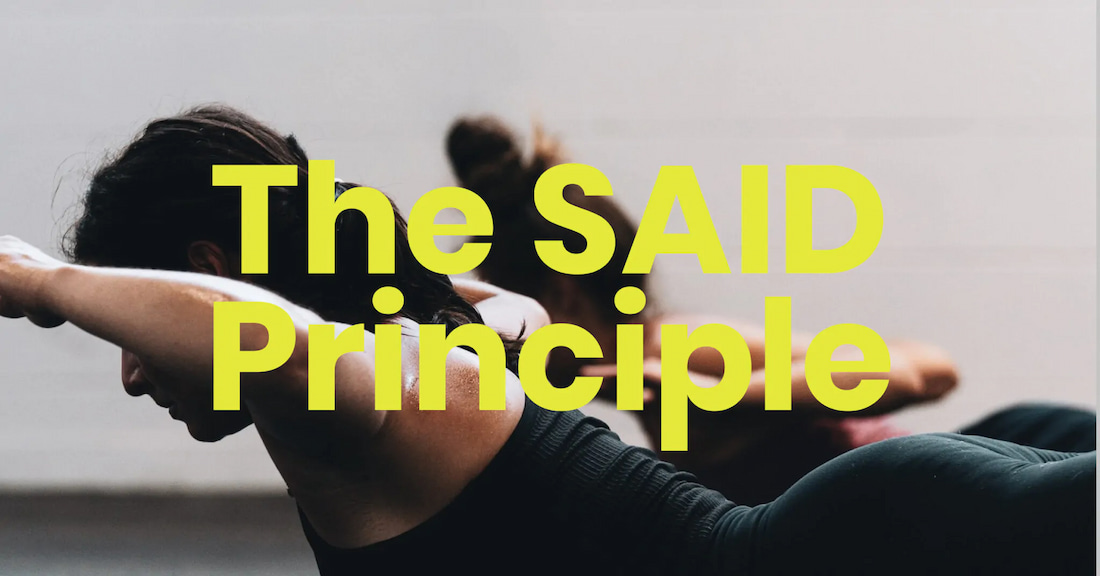
Adapting to movement and fulfilling our needs
It’s easy to think that training and fitness is simply down to exercise; how we exercise, for how long and to what intensity. The more of each, the fitter we are. Which is true – but that isn’t the whole picture.
Considering what movements and exercises we perform is important if we’re training for a certain event. But for overall wellness and mobility, it’s important that we get a variety of different exercise in order to both have health and to achieve and maintain our movement.
We recently wrote about the 10 Components of Fitness – a principle that states that in order to be physically fit, we need to be fit in all areas, from for example, our strength and stamina, to our reaction time and balance, among other things.
If we want to be a championship weightlifter, we might be tempted to work more on our strength than anything else. But if we separate our ambitions for weightlifting gold from our desire to remain fit and healthy into old age with a reduced risk of trips, falls and fractures, then we need to also consider whole body fitness.
That said, our body most definitely does adapt to specific demands that we place on it. Through the type of training and fitness that we do, our body adapts to these imposed demands.
This is known as the SAID principle – specific adaptation to imposed demand. To better understand this, let’s think of our championship weightlifter example. The training they carry out on an ultra-regular basis to an ultra-high intensity will cause the development of stiffness in their spine in response to the compressive load. This helps to create more stability as they lift and a lower risk of injury under a high load.
Similarly, an experienced yogi, practising daily, will compromise stability in the intervertebral discs in their spine to create more flexibility under a low load.
The SAID principle is one of the key concepts in sports science. It means that when the body is placed under a form of stress, it makes adaptations that mean that the body will improve at withstanding that particular form of stress. That is, we get better and more suited to the strains we’re putting our body under.[1]
There is an obvious threshold to this – we cannot simply carry on training and become continuously bigger, better, faster or more flexible. This is the so-called ‘biological ceiling’ of intense training. [2]
This is all well and good if we’re a semi- or professional sportsperson or we’re striving to be the best even without competing. But what if we’re a ‘normal’ person and we want to achieve fitness, flexibility, mobility and wellness?
As bipedal human beings, we’ve evolved, in terms of our movement, to be good at walking running, throwing, climbing, jumping, twisting, lunging and squatting etc. If we can imagine for a moment that we’re walking in the shoes (or probably homemade sandals or even bare feet!) of one of our hunter gatherer ancestors, then these skills would be essential for our survival as we busied ourselves chasing antelope around the plains, avoiding sabre toothed tigers at all costs.
So it’s clear, we’ve evolved to require movement. Our usual tendencies of movement in hunter gather times have however changed dramatically as we’ve become adapted to a relatively sedentary lifestyle, sitting down.
We no longer have to catch and kill our food, or forage for it and dig it up. Long gone are the days when we need to protect ourselves on open plains from the hungry animals we shared our habitats with.
But that doesn’t mean that we’re now completely separated from our primal roots. The skills we acquired when we were hunter gatherers are still now just as useful for keeping our bodies fit and active.
For example, we may no longer need to crouch in a bush holding a spear before springing into action, chasing our unsuspecting prey before throwing our weapon. But from a longevity perspective our ability to squat may reduce our injury risk from falls.
In much the same way, our ability to launch into a run quickly, to perform the act of running itself and to throw at a moving target are all beneficial to our mobility, coordination, reaction times and therefore our overall health. What’s more, studies have shown that running can actually increase our life expectancy.[3]
So it’s clear that our lifestyle has changed significantly since our ancient ancestors were alive. But the fact remains – we need to provide our bodies with movement that fulfils our primal needs but that also works around a busy schedule that involves more 21st Century style existing.
In terms of connecting with our primal needs, let’s now consider the 10,000 steps daily target that’s been recommended for some time now. That was an arbitrary number, first posited by a Japanese marketing campaign in the lead up to the 1964 Tokyo Olympic Games to get people moving in front of the global stage of the Olympics.
But was it so arbitrary? The average hunter gatherer is estimated to have walked around 16,000 to 17,000 steps a day. [4] Which is obviously more than 10,000 but they didn’t walk for health reasons, or to “clear their heads” or for the sheer fun of it. Walking, or moving around, in those times wasn’t actually for exercise according to some evolutionary scientists. It was for survival.[5]
Given that 10,000 steps is actually around 5 miles, 17,000 steps would be 8.5 miles – which on an average day is a lot. So, 10,000 is more achievable and easily quantifies the minimum amount of movement our bodies need to stay healthy and thrive.
But number of steps aside, it’s helpful to know that active movement on a daily basis is what we as a species, have been doing for hundreds of thousands of years. It’s nothing new – simply how we’ve evolved to be, and what our bodies need to thrive, even though our lifestyles are wildly different now.
The introduction of different modes of transport that don’t require our own legs and the new working environment where we sit for extended periods of time over the past 150 or so years means that we’ve lost touch with our roots and we’re adapting to being sedentary. Obesity and other lifestyle related diseases have been increasing per capita over this time and we are starting to learn that obesity from a younger age can reduce our life expectancy by up to 10 years.[6]
So it’s important to move and reacquaint ourselves with our ancestors. After all, they survived, didn’t they? We wouldn’t be here if they didn’t. Our lifestyles might be different, but our basic biological makeup isn’t. Our bodies need movement for survival. And that doesn’t sound too much different from the needs of our ancient forebears, does it?
References
1. Atsushi Imai, H., 2014. COMPARISON OF THE IMMEDIATE EFFECT OF DIFFERENT TYPES OF TRUNK EXERCISE ON THE STAR EXCURSION BALANCE TEST IN MALE ADOLESCENT SOCCER PLAYERS. International Journal of Sports and Physical Therapy. 9(4): 428–435 [Accessed 1 November 2021]
2. Hawley, J., 2008. Specificity of training adaptation: time for a rethink? The Journal of Physiology, 586(1), pp.1-2. [Accessed 1 November 2021]
3. Lee, D., Brellenthin, A., Thompson, P., Sui, X., Lee, I. and Lavie, C., 2017. Running as a Key Lifestyle Medicine for Longevity. Progress in Cardiovascular Diseases, 60(1), pp.45-55. [Accessed 1 November 2021]
4. O’Keefe, E. and Lavie, C., 2020. A Hunter-Gatherer Exercise Prescription to Optimize Health and Well-Being in the Modern World. Journal of Science in Sport and Exercise, 3(2), pp.147-157. [Accessed 1 November 2021]
5. King, A., 2020. Evolved to run – but not to exercise. The Irish Times. [Accessed 1 November 2021].
6. Grover, S.A., Gouache, M., Rempel, P., Joseph, L., Dawes, M., Lau, D.C.W., Lowensteyn. I. 2015. Years of life lost and healthy life-years lost from diabetes and cardiovascular disease in overweight and obese people: a modelling study. The Lancet Diabetes & Endocrinology, 3(2), pp.114-122. [Accessed 6 June 2021]


